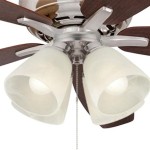Light Bulb for Ceiling: Essential Aspects to Consider
Selecting the appropriate light bulbs for your ceiling fixtures is crucial to enhance the ambiance and functionality of your space. With a wide range of options available in the market, it's essential to understand the key characteristics that determine the suitability of a bulb for ceiling use.
Light Output and Color Temperature
The light output of a bulb is measured in lumens, and it indicates the brightness level. For ceiling lights, a higher lumen output is recommended to provide sufficient illumination for the space. The color temperature, measured in Kelvins (K), determines the warmth or coolness of the light. Warm white light (2700-3000K) creates a cozy and inviting atmosphere, while cool white light (4000-5000K) is more energizing and suitable for task lighting.
Beam Angle
The beam angle refers to the spread of light from the bulb. A wide beam angle provides a diffused and even distribution of light, making it ideal for general lighting. A narrow beam angle creates a more focused beam of light, suitable for accent lighting or highlighting specific areas.
Bulb Shape and Size
The shape and size of the bulb should match the fixture and the desired aesthetic effect. Common bulb shapes include A-type, which is a standard bulb shape, and GU10 or MR16, which are compact and often used in recessed lighting fixtures. The size of the bulb should fit the socket in the fixture.
Wattage and Energy Consumption
Wattage refers to the amount of power consumed by the bulb. Higher wattage bulbs consume more energy and produce more light. However, it's important to consider energy efficiency. Look for bulbs with high lumen output per watt, which indicates energy efficiency.
Dimmability
Dimmable bulbs allow you to adjust the light level according to your needs. Dimmable bulbs are particularly beneficial for creating a flexible and adjustable lighting environment. Ensure that your fixture is compatible with dimmable bulbs and select a bulb that supports the desired dimming range.
LED vs. CFL vs. Incandescent
Ceiling bulbs are available in different technologies, including incandescent, compact fluorescent (CFL), and LED. Incandescent bulbs are traditional and consume more energy compared to other technologies. CFL bulbs provide energy savings over incandescent bulbs but take time to warm up. LED bulbs offer the highest energy efficiency, long lifespan, and excellent color rendering.
Other Considerations
In addition to the essential aspects mentioned above, there are other factors to consider when choosing a light bulb for ceiling use. These include the type of fixture, the height of the ceiling, and the desired ambiance. By carefully considering these aspects, you can select the optimal light bulbs to enhance the functionality, aesthetics, and ambiance of your space.

Ceiling Mounted White Off Led Light Bulb At Rs 50 Piece In Begusarai

Ceiling Lights E27 Eglo

How To Change A Recessed Or Canned Light Bulb

Led Bulb 8718699618988 Philips

Light Bulbs Hanging From Ceiling Vectors Graphicriver
Dome Ceiling Light Bulb Replacement Ifixit Repair Guide

Light Bulb Hanging A Basement Ceiling Stock Photo Adobe

Feit Electric 60w Equivalent A15 Candelabra Dimmable Cec White Glass Led Ceiling Fan Light Bulb In Bright 3000k 2 Pack Bpa1560c 930ca The Home Depot

Bulb Uno Basic C1 Ceiling Lamp With Metal E27 Lampholder And Decorative Rose

Art Deco Ceiling Lamp 4 Black Facil Lampandlight
Related Posts








